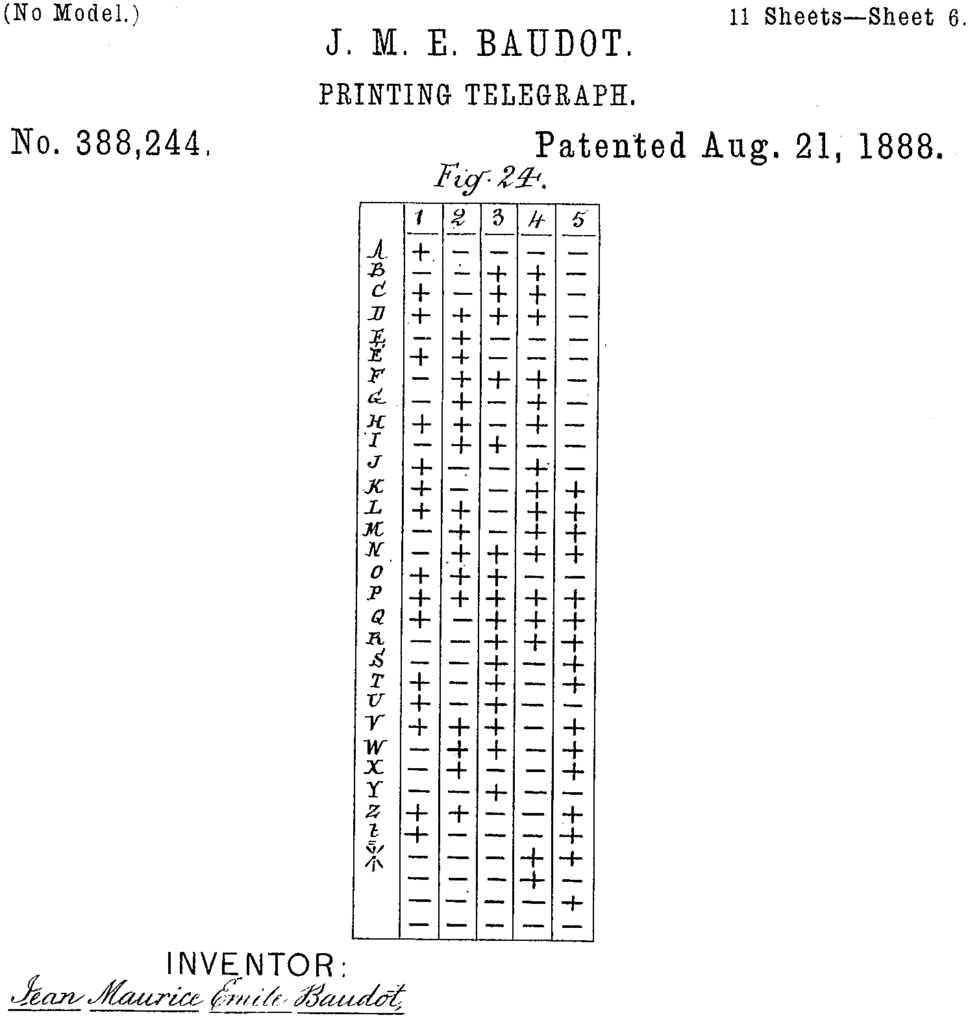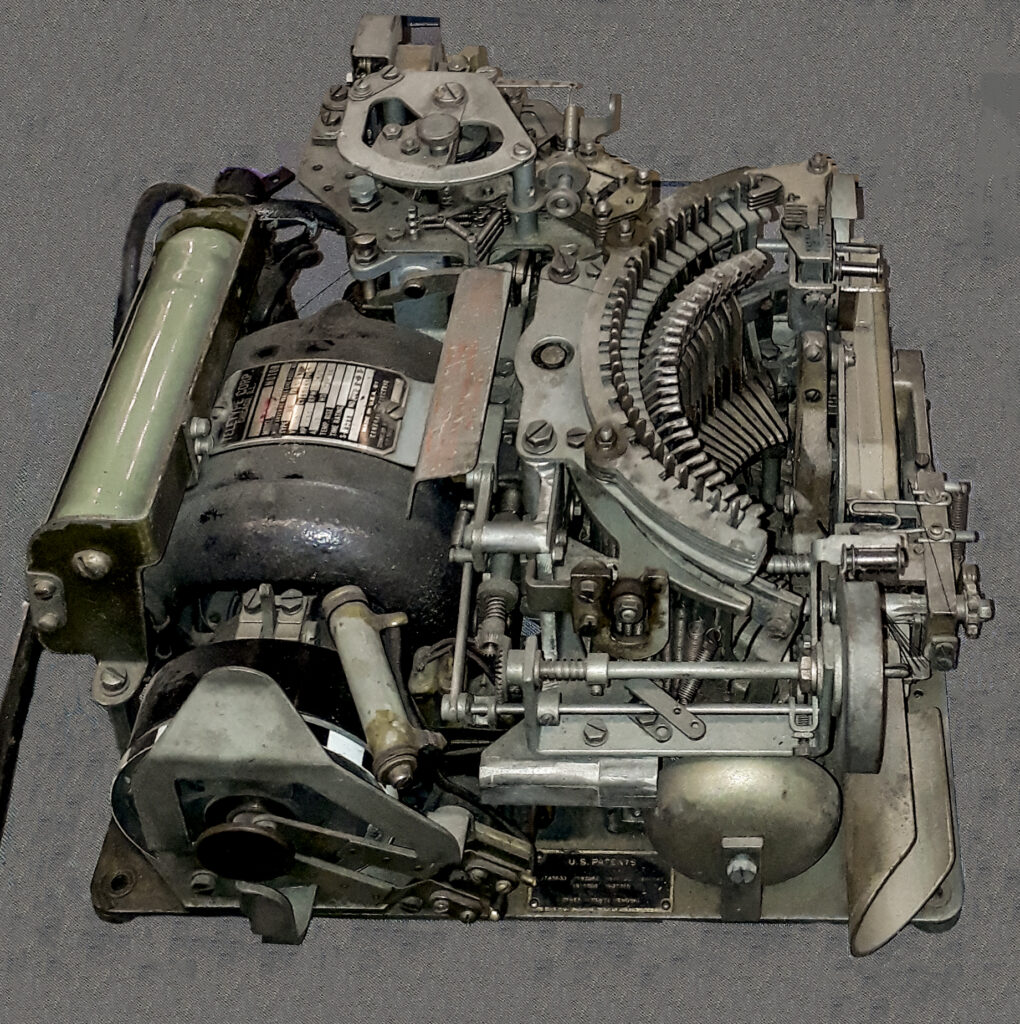The Baudot code is a telegraph code developed by J.-M.-E. Baudot in France, which by the mid-20th century supplanted the Morse Code for most printing telegraphy. It consisted originally of groups of five “on” and “off” signals of equal duration, representing a substantial economy over the Morse system, composed of short dots and long dashes. In Baudot Code, each group of five signals represented a single character; the code therefore provided 32 combinations. Modern versions of the Baudot Code usually use groups of seven or eight “on” and “off” signals. Groups of seven permit transmission of 128 characters; with groups of eight, one member may be used for error correction or other function. (Source)

Baudot’s code became known as the International Telegraph Alphabet No. 1 (ITA1). It is no longer used.
ASCII (American Standard Code for Information Interchange) was developed from telegraph code. Computers can only understand numbers so ASCII is a code for representing English characters as numbers, with each letter assigned a number from 0 to 127. Most computers use ASCII codes to represent text, which makes it possible to transfer data from one computer to another. (To see some of the more commonly used characters and their ASCII equivalents, click here.)
People use ASCII characters to create art. ASCII art is any sort of pictures or diagrams drawn with the printable characters in the ASCII character set. Probably the most common ASCII art picture is the smiley (-: =) but it can get a lot more sophisticated than that. (To enjoy, click here)

Item on display in the Archives
Teleprinter


